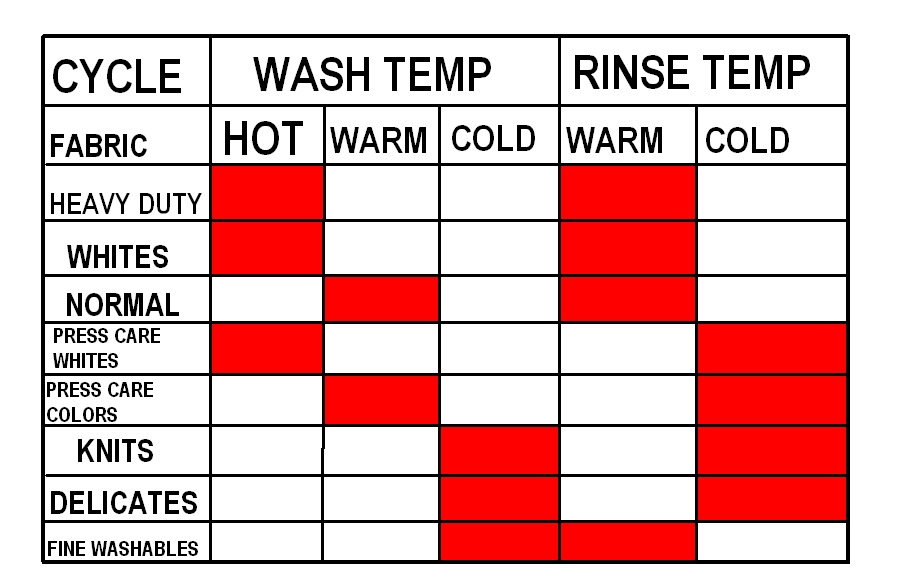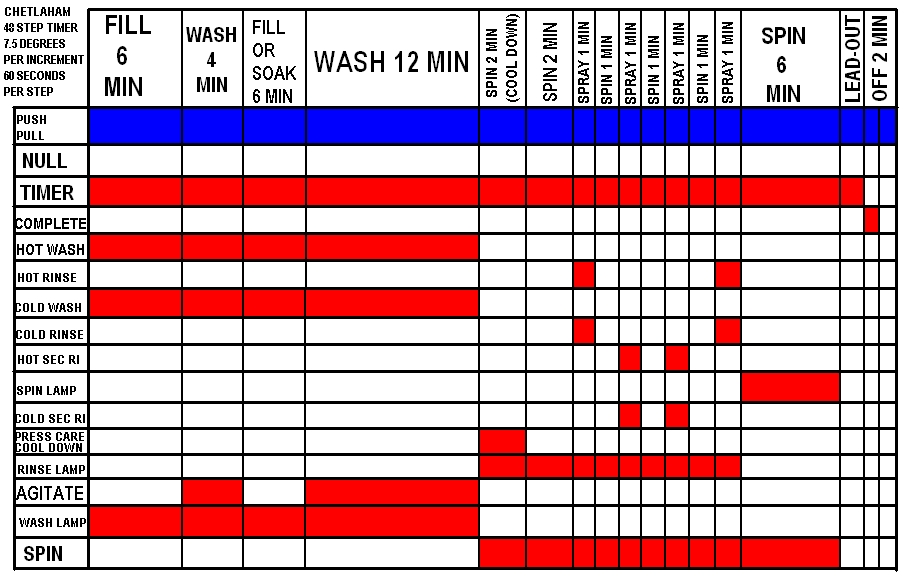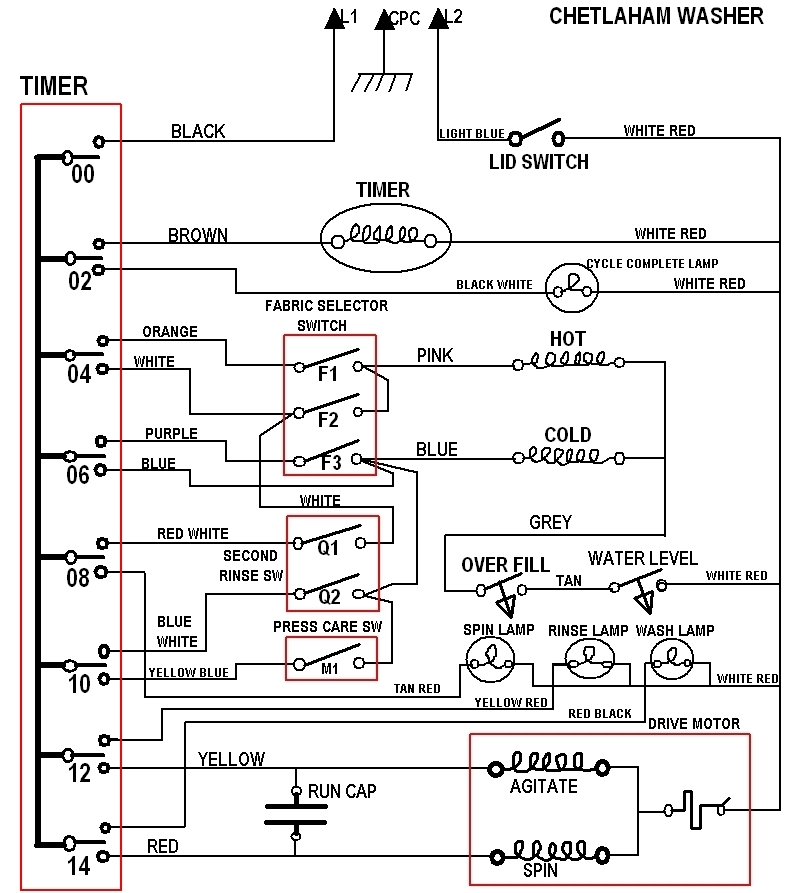@agiflow- I should have included a cycle matrix and wiring sheet here but there is so much going on with the circuitry and cycle increments that following dozens of ever changing nodes becomes exhaustively confusing.
To answer your question all of the 48 increments, 7.5 degree advancement, 60 seconds per step are fixed in time and duration. The wash period is always 14 minutes from start to end of agitation. The variables come from the "fabric type selector" switch which controls temperature, speed and duration of motor run.
For example, with the selector set to "Heavy Duty" the washer would fill with hot water, agitate on high for the full 14 minutes, and rinse in warm water. On "Delicate" the washer would fill with cold water, agitate 2 minutes on low, soak 4 minutes, agitate 2 minutes on low, soak 4 minutes, then agitate on low for 2 minutes before proceeding to drain and spin.
Time is tracked by watching the knob advance clockwise while into the cycle.
I prefer EM to electronics. You can get many different wash, time, speed, sequences, cycles and varying combinations on top of those by adding or deducting various timer contacts controlling the desired device. Think of Kenmore's (and commercial washers) greatest success beside the DA agitator.








